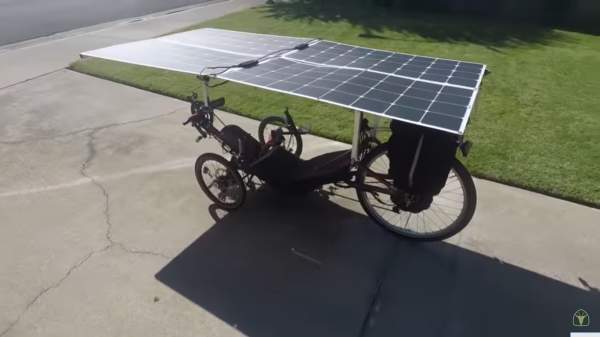More and more electric bikes have been rolling out into the streets lately as people realize how inexpensive and easy they are to ride and use when compared to cars. They can also be pedaled like a normal bike, so it’s still possible to get some exercise with them too. Most have a range somewhere around 10-30 miles depending on battery size, weight, and aerodynamics, but with a few upgrades such as solar panels it’s possible to go much, much further on a charge.
[The Rambling Shepherd] had a tricycle (in the US, generally still considered a bicycle from a legal standpoint) that he had already converted to electric with a hub motor and battery, and was getting incredible range when using it to supplement his manual pedaling. He wanted to do better, though, and decided to add a few solar panels to his build. His first attempt didn’t fare so well as the 3D-printed mounts for the panel failed, but with a quick revision his second attempt survived a 50-mile trip. Even more impressive, he only had his battery half charged at the beginning of the journey but was still able to make it thanks to the added energy from the panels.
If you’re thinking that this looks familiar, we recently featured a tandem tricycle that was making a solar-powered trip from Europe to China with a similar design. It has the advantage of allowing the rider to pedal in the shade, and in a relatively comfortable riding position compared to a normal bike. Future planned upgrades include an MPPT charge controller to improve the efficiency of the panels.


















